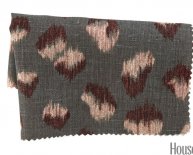
Polyester or Polyamide
Both, polyamide (often called by its most famous brand name: nylon) and polyester are polymers. This means that their fibers are made of a long chain, made of molecules linked to each other. In polyamides, these molecules are linked together by amide linkages (chemical bonds), while the molecules of polyesters are connected by ester linkages.
Both fabrics are moisture-resistant, though at varying degrees. A polyamide fabric absorbs more water, and also dries slower. A polyester is hydrophobic, meaning that it resists water, resulting in less water being absorbed by it. It also dries faster. Since a soaked garment tends to absorb more heat from the body to dry, this means that polyamide fabrics have poor insulating properties, and are not ideal for winter wear. On the other hand, polyester shows a 'wicking effect', whereby, its fibers transports water like a glass tube (capillary) from within the garment and releases it into the atmosphere, thus leading sweat away from the body.
Polyamide fabrics tend to have a better feel, because they have softer and more flexible fibers, though they produce more static. This softness was because they were initially designed as an alternative for silk. This high strength-flexibility combo drives up their cost. Polyester fabrics have a rough feel, though they are more lightweight. However, thanks to modern technology, manufacturers have produced varieties of polyesters which are just as soft as silk, nylon, and other polyamides.
The strength and durability of polyesters is somewhat lesser than polyamides. Polyesters are stretch-resistant, and are more resistant to 'cloth-pilling', an effect where individual fibers roll up to form balls. While this doesn't compromise the fabric's strength, it reduces its aesthetic appeal. Both fabrics are mold- and mildew-resistant, though polyamides tend to get damaged on excess exposure to sunlight. Polyamides are also more stain- and wrinkle-resistant as compared to polyesters; the latter is susceptible to oil stains which can be hard to remove.
Since polyamide fabrics are more absorbent; they tend to absorb more of the water-base than the dye itself. Also, while dyeing, the dye cannot enter the fibers because they are so tightly interwoven. Polyester fabrics, being hydrophobic, repel the water-base in the dye, which ensures that more dye binds directly with the fibers and lasts longer. Moreover, the dyeing of some polyesters is done by vaporizing the dye, which enables it to enter the pores in between fibers.
Both fabrics are easy to care for. They can be machine-washed and dried under medium heat, and can tolerate ironing at low temperature. At higher temperatures, they tend to lose shape and melt, though the melting point of polyesters (500º F) is slightly higher than polyamides (490º F). While polyesters can be dry-cleaned, polyamides cannot, as they react with solvents used in the process.

















